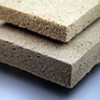- Challenge Now Open to Entrepreneurs, Innovators, Academia - Last Date of Application 22ndJune[1]
- IIM Ahmedabad's Centre for Innovation Incubation and Entrepreneurship* (CIIE) to execute the challenge
- Intel, IIM Ahmedabad's Centre for Innovation Incubation and Entrepreneurship* (CIIE) and MyGov[*] to work together for application management, program facilitation and popularization
- Total grant worth Rs.1.5 crs; top three to get access to seed fund of Rs.20 lakhs each[2]


 Since most foam materials are made of petrochemical plastics, they aren't very climate-friendly. But now an alternative is in sight – a novel foam material produced entirely from wood, which is not harmful to the environment and is also recyclable. In the long term, wood foam could replace conventional products used for thermal insulation, packaging and lightweight construction.
Since most foam materials are made of petrochemical plastics, they aren't very climate-friendly. But now an alternative is in sight – a novel foam material produced entirely from wood, which is not harmful to the environment and is also recyclable. In the long term, wood foam could replace conventional products used for thermal insulation, packaging and lightweight construction. The Mohamed Bin Zayed International Robotics Challenge intends to attract the world's best and brightest in robotics
The Mohamed Bin Zayed International Robotics Challenge intends to attract the world's best and brightest in robotics US$1 Million Award Will Encourage Entrepreneurs Worldwide to Use Robotics and AI to Solve Challenges in Education, Healthcare, Social Services
US$1 Million Award Will Encourage Entrepreneurs Worldwide to Use Robotics and AI to Solve Challenges in Education, Healthcare, Social Services




















































































